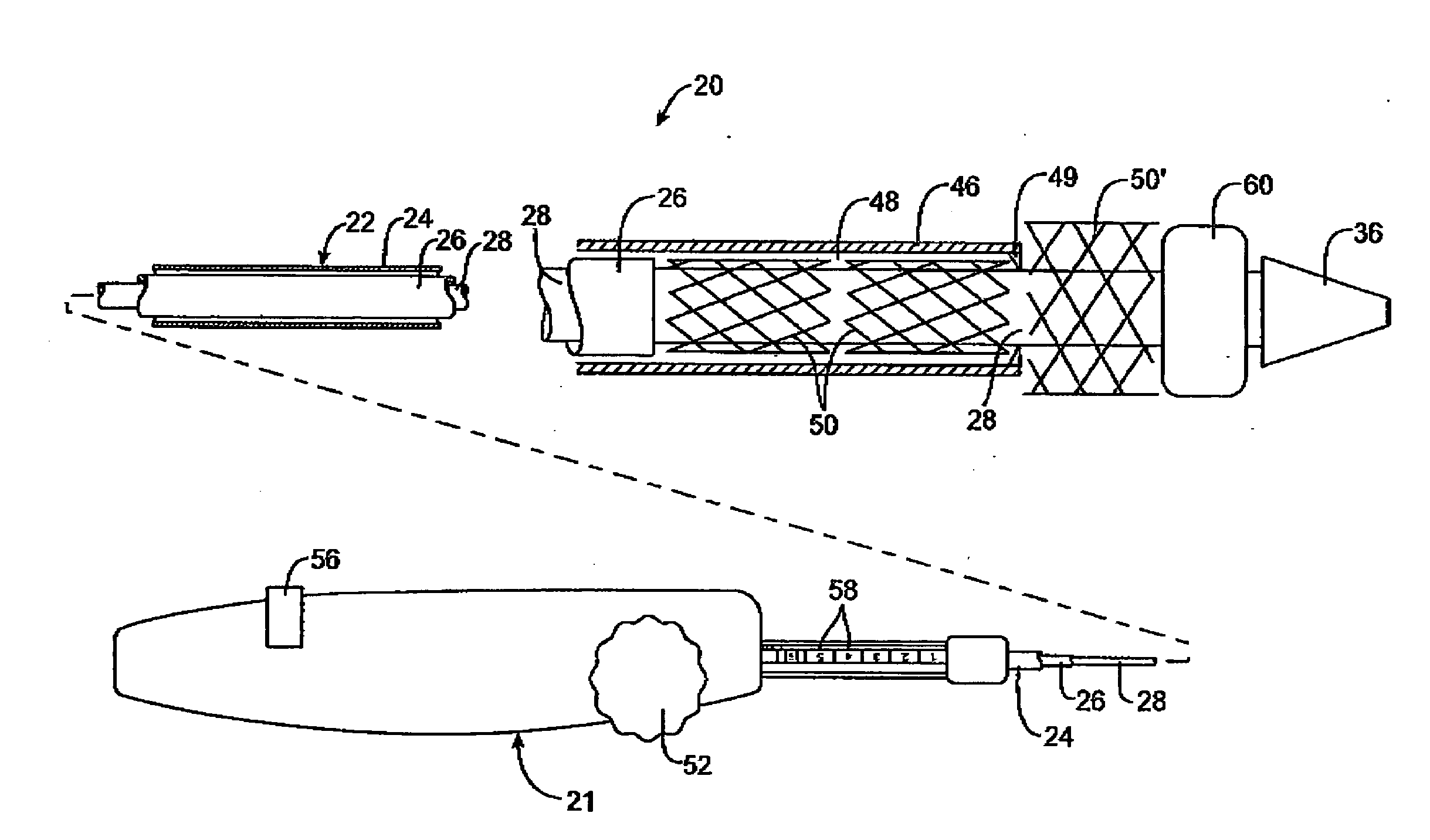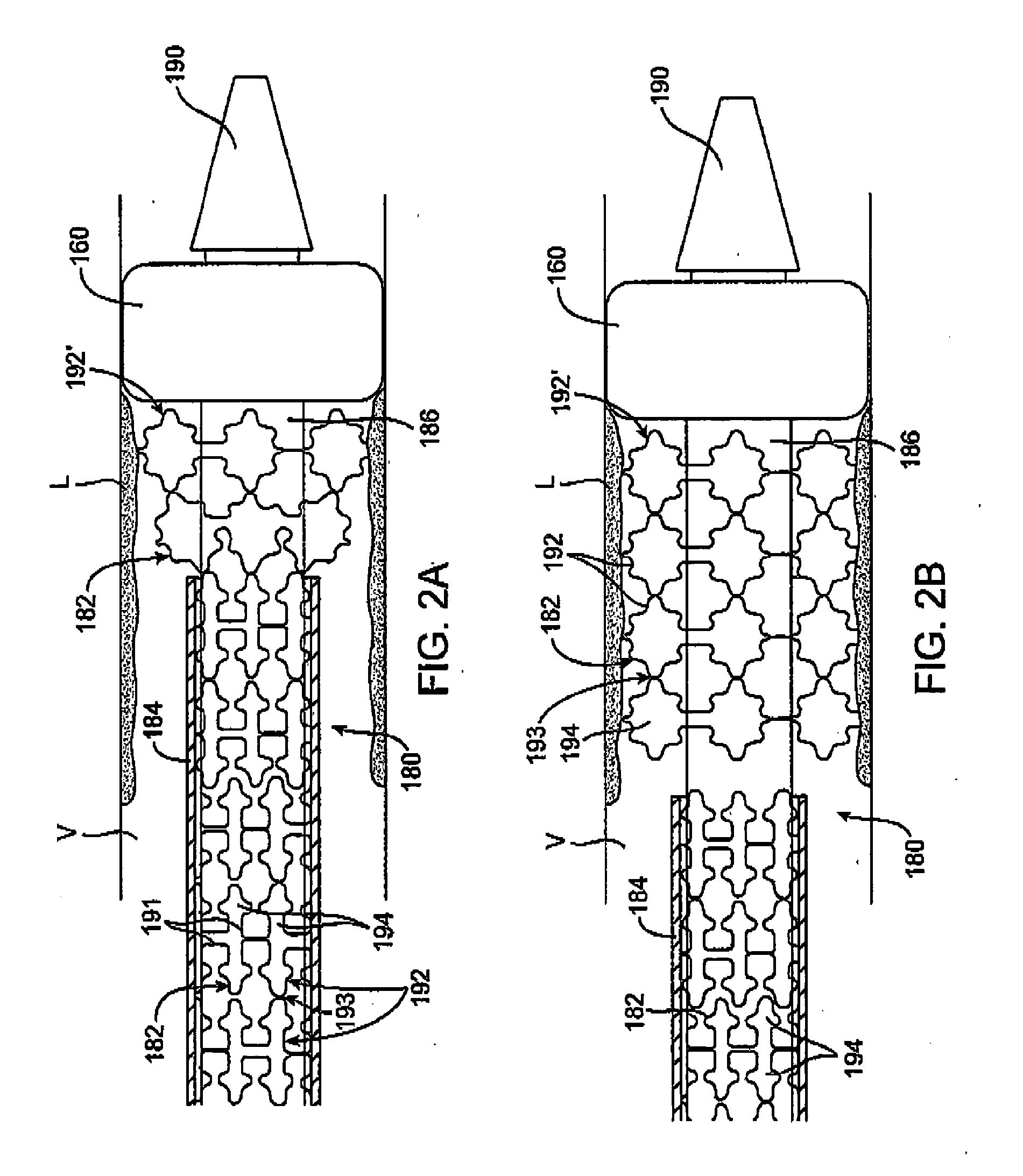Custom-length self-expanding stent delivery systems with stent bumpers
a stent and bumper technology, applied in the field of custom-length self-expanding stent delivery systems with stent bumpers, can solve the problems of stent face, long length of stent, large vessel volume, etc., and achieve the effect of preventing distal migration of stent segments and stable in the vessel
- Summary
- Abstract
- Description
- Claims
- Application Information
AI Technical Summary
Benefits of technology
Problems solved by technology
Method used
Image
Examples
Embodiment Construction
[0025] Referring to FIG. 1, a first embodiment of a prosthesis delivery catheter 20 according to the invention is illustrated. Delivery catheter 20 may have any of various constructions, including those described in co-pending U.S. patent application Ser. Nos. 10 / 637,713, (Attorney Docket No. 021629-000340US), filed Aug. 8, 2003; Ser. No. 10 / 874,859 (Attorney Docket No. 021629-000350US), filed Jun. 22, 2004; and Ser. No. 10 / 884,616, (Attorney Docket No. 021629-000360US), filed Jul. 2, 2004, all of which are hereby incorporated by reference. Delivery catheter 20 has a handle assembly 21 and an elongated catheter body 22 that includes three concentric tubular shafts, all axially slidable relative to one another: an outer shaft 24, a pusher 26, and an inner shaft 28. A distal portion of delivery catheter 20 is shown schematically and in partial cutaway view for clarity. The distal portion, as well as other portions of delivery catheter 20 may include additional features not shown. For ...
PUM
 Login to View More
Login to View More Abstract
Description
Claims
Application Information
 Login to View More
Login to View More - R&D
- Intellectual Property
- Life Sciences
- Materials
- Tech Scout
- Unparalleled Data Quality
- Higher Quality Content
- 60% Fewer Hallucinations
Browse by: Latest US Patents, China's latest patents, Technical Efficacy Thesaurus, Application Domain, Technology Topic, Popular Technical Reports.
© 2025 PatSnap. All rights reserved.Legal|Privacy policy|Modern Slavery Act Transparency Statement|Sitemap|About US| Contact US: help@patsnap.com



